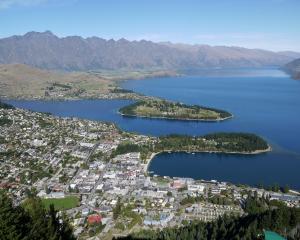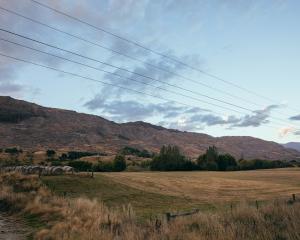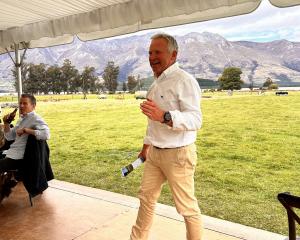NASA'S super pressure balloon has left Wanaka Airport at last, boosted by sighs of relief.
Unsettled weather has stalled four launch attempts in the past six weeks and even late on Monday, wet, windy weather did not appear favourable for a launch, which requires winds to be less than about 7kmh.
But Nasa's meteorologists spotted a small window of opportunity and on a slightly frosty morning, with just a touch of a breeze, the giant balloon departed for the stratosphere at 11.35am.
Two hours and eight minutes later, it was at its "operational float altitude'' of 33.5km on a westerly trajectory due to take it over Australia.
It was then expected to turn east, driven by the winter stratospheric cyclone.
Nasa mission manager Janet Letchworth described it as a "textbook'' launch.
"Everything went off without a hitch - no issues whatsoever.''
And campaign manager Dwayne Orr said while early in the morning he had been unsure it would work out, in the end it was a "very nice launch''.
"Our meteorologist was right on. He knew what he was talking about. Surface winds held for us. Direction came around.
"We look forward to coming down and launching more balloons in the future.''
Unlike Nasa's first test launch from Wanaka last year, this balloon is carrying scientific equipment - a 1-tonne Compton spectrometer and imager (Cosi) - to help explore the universe.
If Cosi is still in the air early tomorrow, it will have passed a significant milestone.
None of the three balloon flights of the Cosi's predecessors, over the past 11 years, have remained in the air for more than 44 hours at a stretch.
This time it is hoped the Cosi will stay aloft for a record-breaking 2400 hours, or 100 days.
One predecessor of the current Cosi was involved in a failed launch at Alice Springs on April 28, 2010.
On that occasion, the gondola carrying the Cosi crashed through a fence, overturned a parked vehicle and was dragged 137m.
No-one was injured, although an Alice Springs couple sitting in a car nearby said they came within "a foot of being wiped out''.
That crash was responsible for the beefing up of safety measure around balloon launches, and at Wanaka yesterday that meant roadblocks and nearby residents being required to remain under cover.
Mr Orr reaffirmed Nasa's interest in establishing a permanent base at Wanaka and said a flight of at least 60 days would give a boost to that suggestion.
The balloon goes up:
•Nasa regards the balloon programme as a cheaper platform for space science than satellites and rockets.
•Nasa hopes the 532,000cu m super-pressure helium balloon will stay in the stratosphere for 100 days, orbiting Earth once every one to three weeks.
•The longest flight by one of Nasa's high pressure balloons was 54 days, following a launch in the Antarctic in 2009.
•The balloon launched from Wanaka on March 26 last year flew for 32 days, five hours and 51 minutes, before developing a leak and being brought down in Australia.
•This year's balloon has a 1025kg scientific payload consisting of a Compton spectrometer and imager (Cosi), carrying out work for the University of California, Berkeley.
•Nasa-funded Cosi telescope is designed to probe the origins of galactic positrons, and study the creation of new elements in the galaxy, gamma-ray bursts and black holes.
•A Cosi last flew on a super pressure balloon launched from McMurdo Station, in the Antarctic, on December 28, 2014. It was hoped the flight would last 100 days, but it was terminated after one day and 20 hours because of a small leak.
•The balloon also carries a 3kg "Carolina Infrasound instrument'', a device developed by the University of Carolina to record acoustic wave field activity.
•The balloon may be visible from the ground, particularly at sunrise and sunset, in the southern hemisphere's mid-latitudes, such as Argentina and South Africa.
•The balloon can be tracked online at www.csbf.nasa.gov/map/balloon9/flight669nt.htm












